Toyota has just “updated” the very popular Tacoma pick-up. Which has arguably remained popular for the past eight years precisely because Toyota didn’t “update” it. But nothing lasts forever – especially if it’s good – and so here we are.
The 2024 Tacoma will cost several thousand dollars more to start – and it will no longer offer a V6.
Just the same as everyone knows why previously healthy (often young) people are coming down with strange maladies that just happen to be coincident with their having participated in a strange medical experiment – but we’re not supposed to notice (much less mention) the obvious correlation.
Just the same, we (meaning the car press) are supposed to just drive by the news that the Tacoma will henceforth be four cylinder-only. As if buyers had asked for that.
Turbocharged, of course, to make up for the displacement that’s been lost, just the same as every other case of a V6 being taken out of the lineup for no apparent good reason. As in the case of the Toyota Camry, for instance. As in the case of the Avalon – the Camry’s larger brother- which used to come standard with a V6. That’s gone – and so is the Avalon, too. It has been replaced by the Crown, which is powered by a turbo-hybrid four.
And a turbo-hybrid four (the iForce Max) is now the top-of-the-line powertrain in the just-updated Tacoma. It’ll be more powerful – 326 horsepower, according to Toyota (vs. 278 hp for the 3.5 liter V6 that’s about to rest-in-peace) but it’ll cost you several thousand dollars more, which is the price Tacoma buyers will be paying to both “save gas” and to “emit” less, as of carbon dioxide.
If, of course, they can afford to pay it.
The ’24 Tacoma’s base price will be $31,500 – for a 2WD SR trim without the turbo-hybrid set-up. It will come standard with just the turbo’d 2.4 liter engine, which will make 228 horsepower – substantially more than the current Taco’s standard 2.7 liter four (without a turbo) that makes 159 horsepower. But the price you pay for that update is $2,900 – which is the difference in base price between a current (2023) Taco with the 2.7 four and RWD – base price $28,600 – and the updated ’24 version.
Which is now almost as expensive as a base-trim full-size truck used to be – and almost still is. A base trim ’23 F-150 regular cab stickers for $36,750.
Of course, the Taco almost is, too.
No one sells anything less than a “mid-sized” truck and these trucks are full-sized, relative to the full-sized trucks of the early 2000s and prior. They are longer, in some cases (213 inches in the case of the ’24 Taco; 226.2 if you get the six foot bed) with only their width being just slightly less. So in that sense, you are getting more for your money.
The problem is not having more money.
Truck sales are beginning to show signs of greeness-around-the-gills. Probably because the economy is. There are only so many people who can afford a $53,595 truck. The latter is the MSRP of a Limited trim iteration of the just-updated Taco. The turbo-hybrid iteration’s MSRP is likely to be closer to $60k.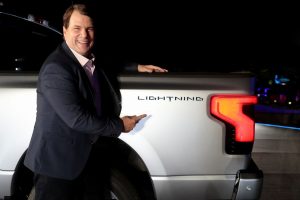
For a Taco.
Of course, that’s a steal compared with the now-common $70k-plus asking price of a loaded half-ton. Let alone an electric three-ton such as the Ford Lightning. The price of the latter approaches six figures when fully optioned out. The monthly payment on that approaches what people used to pay on their mortgage each month.
Back to the gas – and gasses.
The updated Taco with the turbo’d 2.4 liter four returns only marginally higher gas mileage: 20 city, 26 highway for the 2WD version vs. 20 city, 23 highway for the current version equipped with the 2.7 liter engine, sans the turbo. So it’s not about “saving gas” – and never mind how much that costs. Yes, the power increase is nice – assuming you can afford it. It’s likely many won’t be able to – rendering the power gain as irrelevant as the softness of the hand-stretched leather inside a Rolls Royce.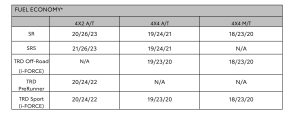
What it is about is “emitting” gas.
Or rather, “emitting” less – of the gas that’s invisible but said to be not-green by those who like red. The turbo-hybrid stuff is not just a coincident happening. It is happening for a reason very similar – in terms of the motives behind it – to the one that led to all this “dying suddenly” stuff that’s just happening. Never mind that it never happened before. Never mind that it began to happen after something else happened, first.
Toyota – to its credit – is trying to limit the updates. It did not turn the Taco into a battery powered device.
But, that’s an inevitability. Just the same as it was with regard to the updating of the V6 into oblivion.
Absent, that is, any serious attempt to stop the advancing red tide that’s using green to get people to accept less for more.
As is always the case when red becomes ascendant.
. . .
If you like what you’ve found here please consider supporting EPautos.
We depend on you to keep the wheels turning!
Our donate button is here.
If you prefer not to use PayPal, our mailing address is:
EPautos
721 Hummingbird Lane SE
Copper Hill, VA 24079
PS: Get an EPautos magnet or sticker or coaster in return for a $20 or more one-time donation or a $10 or more monthly recurring donation. (Please be sure to tell us you want a magnet or sticker or coaster – and also, provide an address, so we know where to mail the thing!)
If you like items like the Keeeeeeev T shirt pictured below, you can find that and more at the EPautos store!



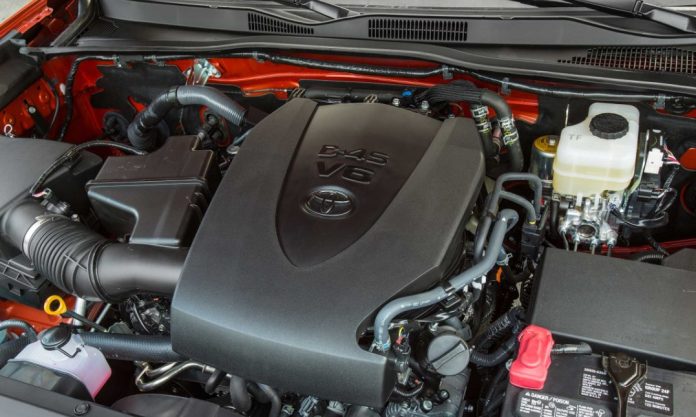



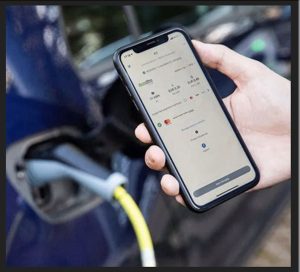






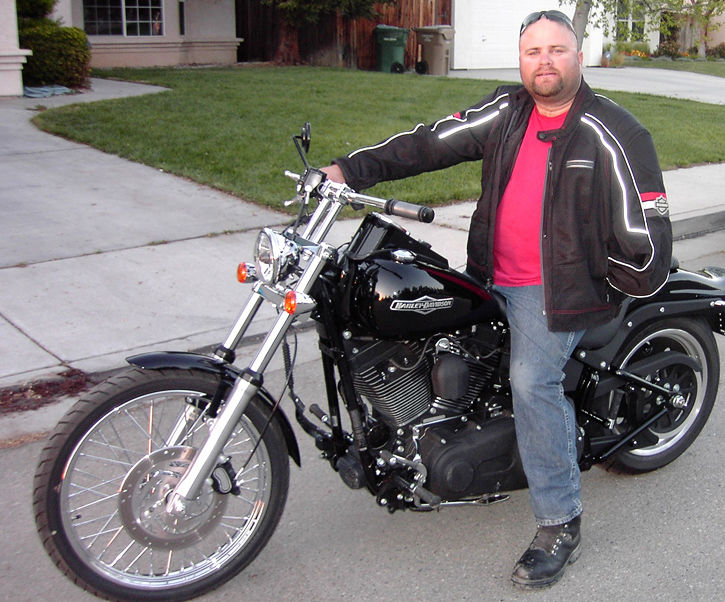
It’s really cool that Toyota put in all the additional engineering to offer the new Taco with a manual transmission! I realize I’m one of a dying breed, but I love manual transmissions in any kind of car, not just sporty ones.
Likewise. I bought one vehicle with an automatic. When I sold it, I cried, ‘Never again!‘
I have a 2011 Toyota Avalon with 80k miles, very nice car. While getting it serviced I wandered into the showroom, dangerous and expensive journey possibly, thinking it might be time to upgrade knowing they were stopping production of the top of the line luxury car Avalon. They just happened to have a traded in Hybrid with 2k miles. I test drove it. What a disappointment, most all of the creature comforts and nice touches were gone, no more power extending drivers seat for tall guys like me, no more door pouches that pivot out for easy access, no more automatic rear window sun screen etc. The ride was harsh and rough and the seats were not at all comfortable. I walked away wondering how such a nice car ten years ago could become what it had. Bean counters and bureaucrats now design the cars it seems.
@Eric – What’s the word on the 4Runner?
The V6 going unavailable in the 4Runner would move up a purchase decision at our house.
Hi Roscoe,
Bet your bippie the 4Runner – which is based on the Taco – will be similarly “updated.”
In 2024 or will Toyota wait until 2025.
Around here (Austin), I’ve noticed that the 4Runner is very popular, particularly with women in healthcare-related fields.
Toyota is playing with fire changing that vehicle.
The Explorer displaced the 4Runner for a while in the demographic, but the water pump replacement costs on unibody model and the initial problems with the following generation made the vehicle fall out of favor with the medical industry crowd.
The 4runner remarkably will be the same for 2024, and probably the last chance to get it. Maybe with the new Land Cruiser and new Taco Toyota didn’t roll this one out.
I highly recommend the 4runner. Made in Japan in Lexus factory. Better 4.0L motor than the Taco’s 3.5L.
Keep in mind the new Tacos, new 4runners, new Land Cruisers, in addition to be more $$ also all have digital gauge clusters and huge 12″+ screens (giant iPads mounted to the dash).
Truly the 4runner is one of the last ones. I have a 2021 but the 2024 is basically identical. From what I can tell there have been zero discernible changes since the refresh in 2020.
Like the medical industrial crowd. Def out of favor.
Eric,
Who gives these faceless bureaucrats the moral and legal right to dictate to us how these cars are engineered and sold?
If we can take away that assumed authority, all of this goes away.
Anon
The people with the guns give them the legal right. They have no moral right.
We all do. By failing to break out the tar, feathers, and maybe even sometimes rope in response to their provocations.
We get the government we settle for.
If it were more dangerous to be a nattering busybody, there would be a great deal fewer of them and the few that remained would be much easier to deal with.
Anon – “Who gives these faceless bureaucrats the moral and legal right to dictate to us how these cars are engineered and sold?” The power is unconstitutionally “assumed”.
Since folks continue to vote Republican and Democrat, they’re asking for more of the same.
Insanity: “Doing the same thing over and over again
and expecting different results.”
Albert Einstein –
New Colorado / Canyon is sans v6 now too
my brother just got a new gmc canyon denali (after his last regular canyon was totaled), and it came with the 4cyl 2.7L turbo. A Denali!!!!! It gets out of it’s own way, impressive for a 4-cyl, but he knows he won’t keep it past warranty. I just drove in it, and it still sounds like a 4cyl.
You can absolutely tell it is working it’s ass off to move a 4500-5000lb vehicle.
I have an idea, why didn’t they put the amazing CT4V Blackwing V6 in the Denali? maybe cause it’s not tough enough for towing duties?
and he gets way worse mpg than the sticker shows cause he’s always in it.
How stupid are these CAFE people.
They are smart. They will get around to figuring it out that gas mileage depends on driving style.
And then mandate the insurance rackets discount surveillance dongle be forever connected to lizard and companies bean counting Karen.
Another forgotten issue I have with modern trucks is the replacement of the leaf springs with coil springs (Tundra and now Tacoma) and an air suspension (Ram). Leaf springs are simple tech that dates from the horse and buggy era. They will last the lifetime of the truck, barring rust rot. I have a 2010 Tundra and I replaced the well-worn shocks with Ranchos and she rides like a new truck. Didn’t cost me an arm and a leg for a new set of coils or heaven forbid, air springs that die about about 80k to 100k miles.
Add to that the complexity of a turbo motor (turbos should be for Supras, 911s and WRXs, not regular cars and trucks) and you have a recipe for disaster.
Compounding the potential for disaster is that the Tacoma is now Hecho en Mexico.
True story. I grabbed a manual transmission Taco in late 2020. Thankfully it was one of the last ones to come out of the Hecho en SA Texas plant before they shifted all production to the 2 Mexican factories for MY2022.
Toyota will lose sales on this popular truck now. just like Ram is struggling to sell their v8-hemi-with-etorque-mild-hybrid-only, which is the only engine avail for 24 trucks unless you want the V6 which some do. no one wants the etorque. It is my opinion why they announced the Hurricane is coming out Q1-24 in the ’25 Ram probably way earlier than they wanted too.
Meanwhile, a plug-in hybrid would actually get better milage/theoretically emit less CO2 than a turbo-4 on short trips. A complicated and expensive “solution” but nonetheless would achieve most of the goals the greens claim are necessary.
But why put the effort into engineering such a vehicle if there’s no incentive? Oh the public might like it (Chevy Volt owners actually preferred it over traditional ICE vehicles), but that’s not enough to raise the ESG score. Only by appeasing the bureaucrats in Washington, Brussels and Sacramento will Wall St reward the CEO with his bonus.
It seems like it’s far more profitable for the greenwasher to beat the drum than it is to come up with practical solutions that don’t inconvenience the public. Like reading those “helpful home hints” that say you should use vinegar and old newspapers to clean everything instead of whatever Johnson Wax and Dow Chemical are peddling. Because what we all really want our homes to smell like rancid pickles. Because chemistry is bad, unless it’s about converting bugs and beans into a meat-like substance for human consumption.
Toyota probably has a hybrid planned for their rumored answer to the Ford Maverick which is in the works, based on either the Rav4 or Corolla Cross platforms.
However, I believe that a normally aspirated 4-cyl in that size “truck”, priced under $20k to start, would sell as many as Toyota could make.
Oh I know and hell no am not cleaning my home with vinegar! Even for windows there are better products and if you have hard water spots you need a good cleaner. Vinegar not only smells funky but leaves surfaces a bit sticky.
Thank God the soon-to-be 24 year old Sierra is still operable…
‘The updated Taco with the turbo’d 2.4 liter four returns only marginally higher gas mileage: 20 city, 26 highway for the 2WD version vs. 20 city, 23 highway for the current version equipped with the 2.7 liter engine, sans the turbo.’ — eric
In both cases, these figures are lower than I would have expected. Probably they are pushed lower by the truck’s weight and drag coefficient.
If compact pickups still existed, these rather low mileage ratings likely could be improved by 2-3 mpg. But Govco punishes smaller-footprint pickups by demanding even higher mileage improvements. So they don’t get built.
These days, vehicle engineering is dictated by Clowngress, cucks and Californicators.
And we’ll have fun fun fun
Till our nanny takes the Taco away
— Beach Boys, Fun, Fun, Fun
let’s see…
228 – 159 = 69
69/159 = 0.43 = 43% more power from same amount of fuel
Cost = $2900
Amortized over 5 years @ B of A’s current (12/12/23) advertised rate of 6.19%
=> $56.32/mo => $0.81/hp/mo
most of which will be paid in devalued dollars, due to inflation of the currency.
Bonus: hwy fuel economy increase = 3mpg => 3/23 = 13%
Anyone have the power & torque curves (hp & torque vs. RPM) for comparison of performance? Back in the day, those graphs were standard feature of auto reviews.
Maybe not so much, in this era of “gay wheels” and constant kvetching about … whatever.
And to think, the Toyota 4Runner could have been optioned with the “million-mile” V8 as recently as 2009.
I believe the current gen 4Runner is now sole bearer of the last naturally aspirated V6 offered by Toyota.
RIP 2GR
Running a 1995 Taco price through the inflation calculator reveals a today-price of $25,205. They could get a model to that point without Uncle, so it’s unsurprising that the new one is over $31K.
Considering the difference in materials, suspension, and other obvious improvements, mid-30s seems like a good deal to me. Consumer desire for the “one with more stuff” does escalate the price, which was NOT an option in 1995. At least they have a moderately equipped model available.
Hi Scooter –
The thing is, the Taco ought to be cheaper today than it was in ’95 (back when it was still a compact-sized truck). My ’02 Frontier cost just under $13k when it was new. Why should a simple, compact-sized pickup with a leaf spring rear suspension, solid axle and no power options cost more to build today than it did back then? It doesn’t. What’s happened is our money buys less – and the government is forcing us (effectively) to buy more. As for example the now-almost-mandatory automatic transmission. Because automatics are programmable – and manuals aren’t.
The Taco is now a full-sized truck in every meaningful sense. And a 4WD model with all of the now-standard power options (and overdone electronics) plus a turbocharged engine will cost you close to $35k on the low end. This is unsupportable. Yes, I know – the new Taco has an independent rear suspension and it’s much more powerful and “nicer.” Well, that’s fine – for those who can afford it.
How many can?
Keep in mind that in addition to the cost of the truck there is the cost of insurance – which will be much higher, to reflect the repair/replacement cost of this much-more-costly truck. Plus the property taxes (in states that have them).
Is it any wonder more and more people are dead broke?
[The thing is, the Taco ought to be cheaper today than it was in ’95 (back when it was still a compact-sized truck).]-Eric
You’re thinking of capitalism Eric. Most have no clue what that is.
Today the US and West economies are fascist, the merging of corporate and government, where the government regulates the corporations in every way conceivable.
One good canary-in-the-coal economic indicator is the trucking industry; freight levels and the amount being spent carrying the freight.
I work for a large company, over 5000 trucks on the road.
Freight is a struggle, if you lood at freight indexes you will see why. A little more than a year ago we were hungry for drivers. Now, not so much. I believe we are no longer offering new 5-day’s out jobs anymore, because freight levels in some regional markets wont support that.
For the past 8-9 months, it has become common for drivers to wait 12, 16, or even a day for a load to become available, in many areas. We survive by picking up the freight that smaller carriers lose due to pricing, or when other carriers go out of business. We did not see our annual Christmas surge, which should have begun in mid-October. Freight always surges by about 30% leading up to the holidays; not this year. Traditionally, January and February are the slowest months; if freight is this slow now…the first quarter might be glacial.
Who knew a trucking company would need to do consumer spending research to decide what customers to go after…pet food, medical supplies, groceries…things people do not compromise on, even in a down economy.
California is a bottle neck; they banned trucks older than…I think 2016?…from operating in their state, although that might have been challenged. But very few of our drivers want to go there; no owner operators ever do, now. Makes everything shipped out of Cali much more expensive than it should be.
And now people are starting to steal diesel, steal trailers, stealing freight, hijacking empty trailers and holding them hostage for a few hundred bucks.
Getting crazy out there.
They don’t want us driving. It’s working. You can’t drive what you can’t afford to buy.
“Contrived complexity for job security” has long been the basis for the IT/computer world for decades. The problem is when it’s applied to the tangible world.
In this case the ICE/Turbo/Hybrid system, which is highly complex, is being used to address the GovCo mandates that are being thrust upon us. These mandates are the modern equivalent of the medieval question of how many angels can dance on the head of a pin. They are enforced with the same religious zeal as previous Inquisitions that tried to convert heretics and rid the world of “sin”.
It flies in the face of reason, logic and the iron laws of complexity which state that the more complex a system is, the less reliable it becomes.
https://dennisholeman.com/technical-complexity-vs-system-reliability-and-useful-life/
But, reason and logic were never the bailiwick of religious fanatics, then or now.
This is a good reason why I have stuck with Toyo for so long. My 2011 Sienna is more reliable than my 1978 Corolla was, even with its more complex innards. It’s at 330k now.
Our 2021 maxed-out Highlander Hybrid has had no issues at all as it passes 90k and somehow feels more glued together than the Sienna did at that point. Dang Japs seem to have been able to keep the complexity from ruining the longevity. Time will tell if they can keep it up. Too bad that the complexity is reflected in the price, however!
Seems to me that there are signs of great innovations in the auto industry. Even these complex (and dangerous) EV batteries will improve with time. Fascinating to watch, even though I enjoy a Panther-platform vehicle as much as the rest of us here.
For example, a Lucid Air, while absolutely aimed at the top 1% of buyers, can be appreciated for its engineering. 30-40 years ago I had a similar attitude toward Porsche and those pointy-nosed BMW 6-series. Great cars I should have picked up when I had the chance.
[Even these complex (and dangerous) EV batteries will improve with time. Fascinating to watch,]- scooter
Highly doubtful,,, as the reasons for change from IC to EV is false dogma from a tyrannical government with evil intentions. There is no Global Warming and CO2 is not dangerous but a necessary gas for all life to exist.
Scientific advancement is dubious when based on lies.